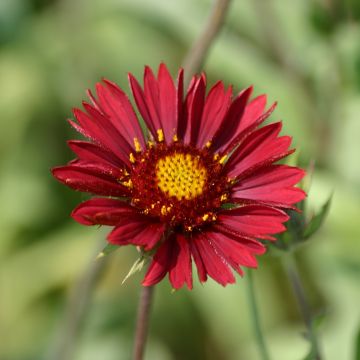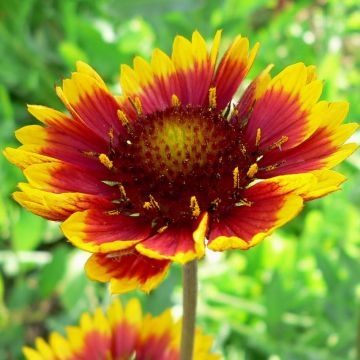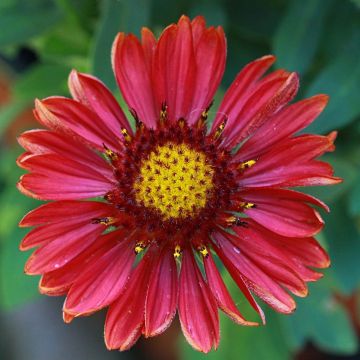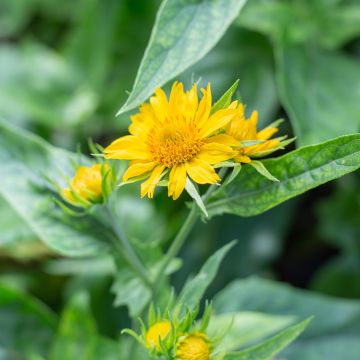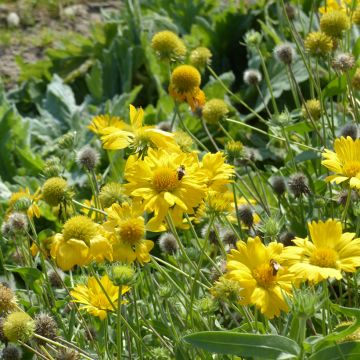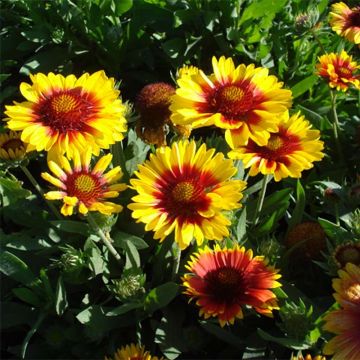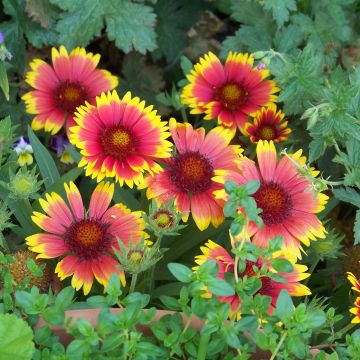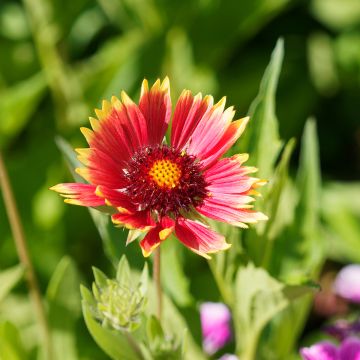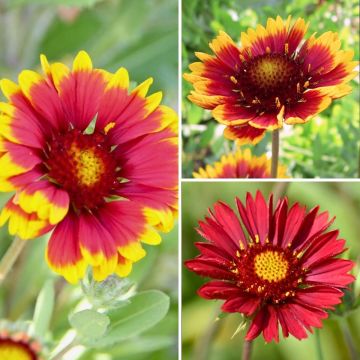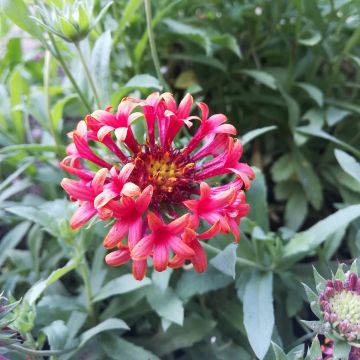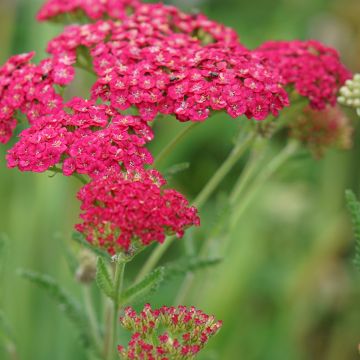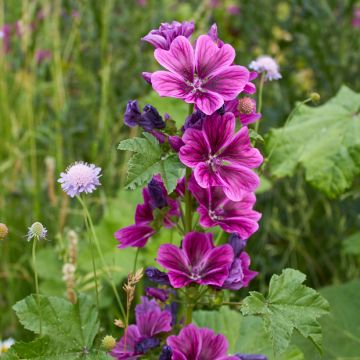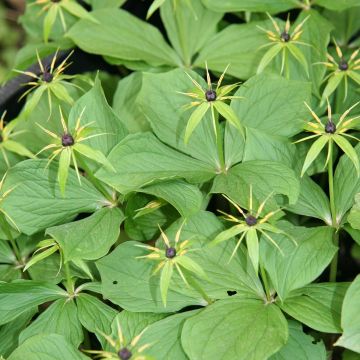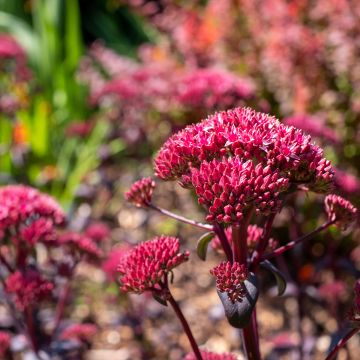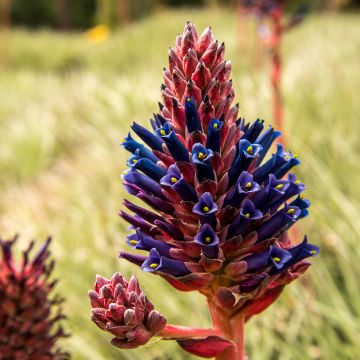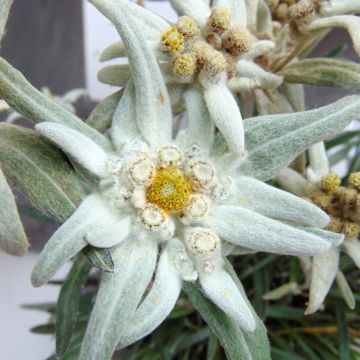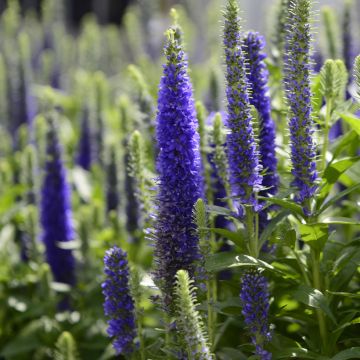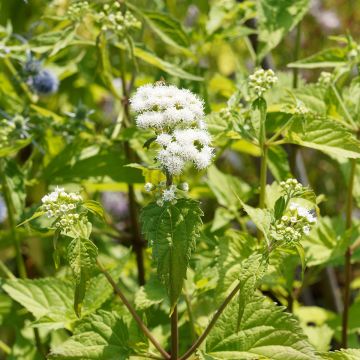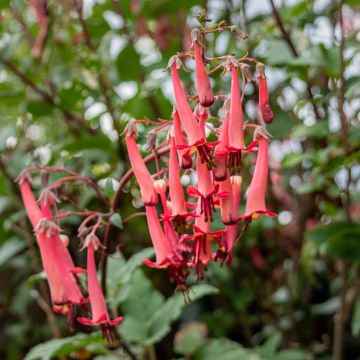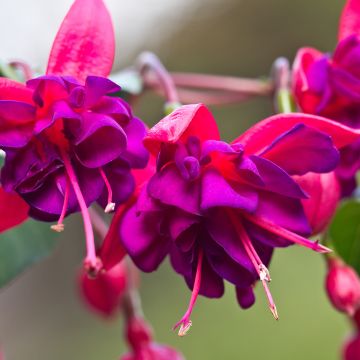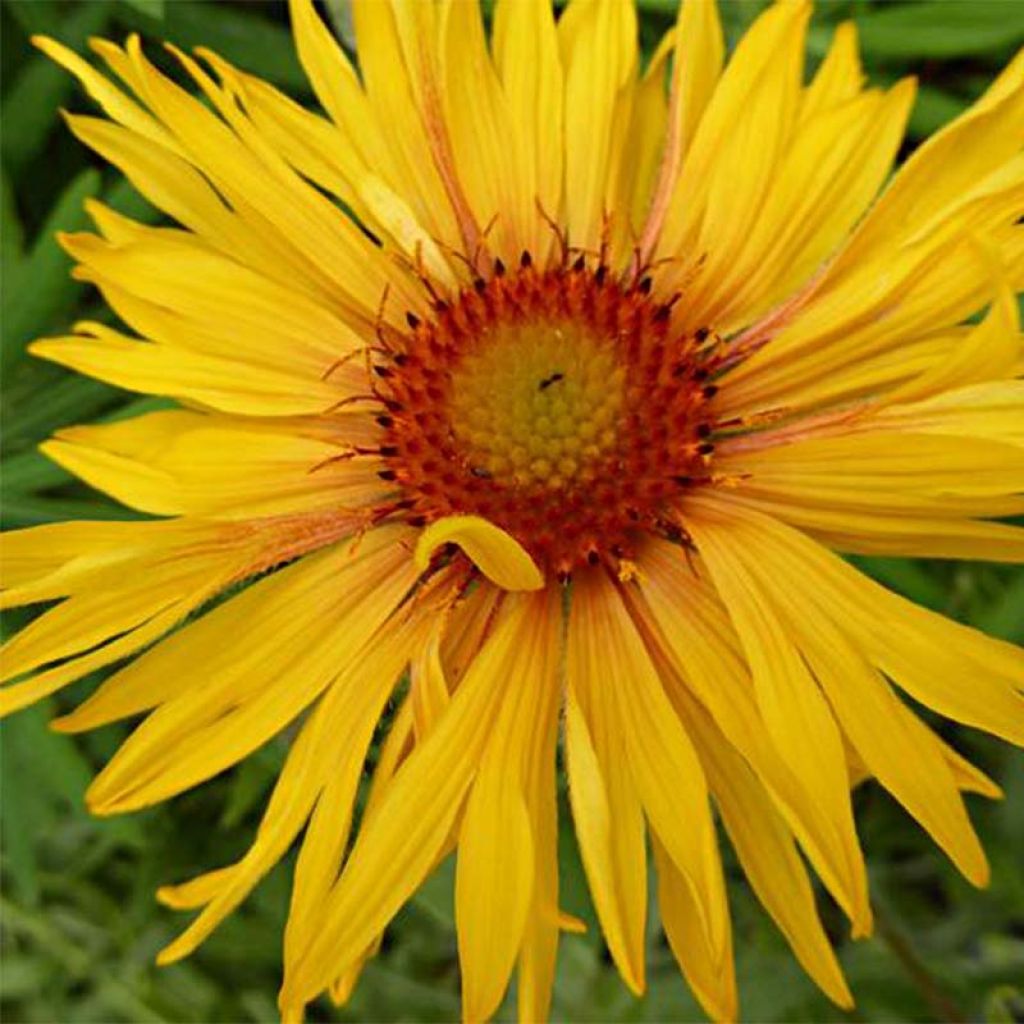

Gaillardia aristata Amber Wheels
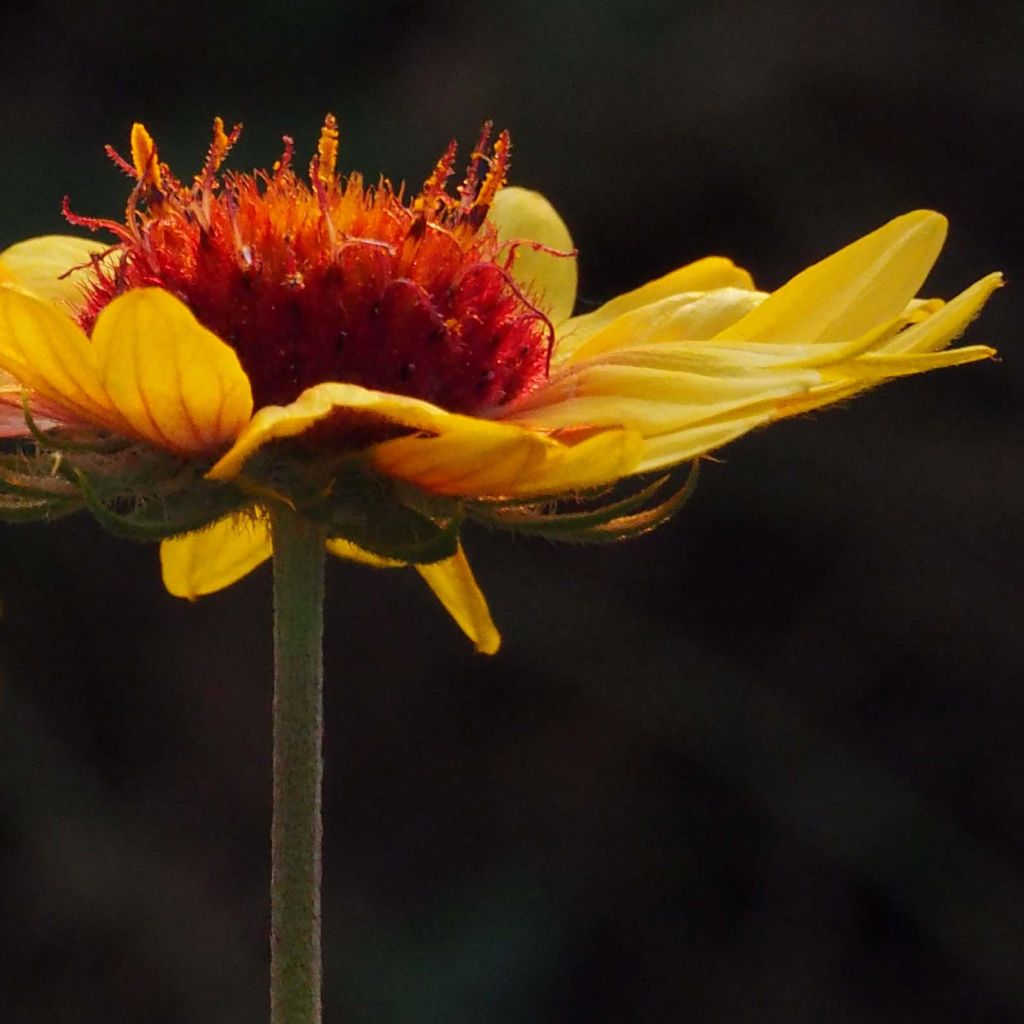

Gaillardia aristata Amber Wheels
Gaillardia aristata Amber Wheels
Gaillardia aristata Amber Wheels
Blanket Flower, Common Gaillardia
This item cannot be shipped to the selected country
Delivery charge from €5.90
More information
Schedule delivery date,
and select date in basket
This plant carries a 12 months recovery warranty
More information
We guarantee the quality of our plants for a full growing cycle, and will replace at our expense any plant that fails to recover under normal climatic and planting conditions.
From €5.90 for pickup delivery and €6.90 for home delivery
Express home delivery from €8.90.
Does this plant fit my garden?
Set up your Plantfit profile →
Description
The Gaillardia aristata 'Amber Wheels' is a new variety of gaillardia selected for its longevity and its bicolour flowering that is both generous and cheerful. From June to October, drawing resources even from the poorest soils, it offers the endless spectacle of its daisy-like flowers fringed with amber-yellow and red centres. It quickly forms beautiful semi-evergreen clumps of grey-green foliage that withstand cold, heat, and drought. Almost fail-proof, gaillardias are plants accustomed to very harsh living conditions: they find their place in all gardens, regardless of their style!
Gaillardia aristata is a short-lived perennial plant native to the sunny and dry plains of the western and central United States. Anglophones affectionately call it the 'blanket flower'. Indeed, its colours resemble the patterns and colours of Indigenous North American weaving. Like the sunflower, it belongs to the large family of asteraceae. The 'Amber Wheels' variety, recently selected in the USA, has inherited from its parent increased hardiness and longevity. However, it is more floriferous than the wild species and offers larger flowers, undoubtedly inherited from a Gaillardia x grandiflora.
The plant forms a clump of leafy stems with an upright habit, reaching 75 cm (30in) in height when flowering and 40 cm (16in) in width within 2 years. It produces numerous inflorescences from summer to autumn in large solitary heads, 4 to 6 cm (2in) wide, where pollinating insects gather. Each head is composed of a double row of ligulate florets fringed with dark yellow and red at the base, surrounding a large rounded centre composed of tiny fertile florets in red on the periphery and amber at the heart. This flowering brings joy to bees and butterflies, and then to birds when they make way for mature seeds. The foliage, mainly basal, is composed of narrow, aromatic, slightly lobed or deeply cut leaves, with a greyish-green color, covered in down.
Somewhat outdated today, gaillardias, along with coreopsis grandiflora and other Gaura, are among the champions of floral abundance. Even the wild form G. aristata proves to be very floriferous. Their only drawback is that they do not tolerate ambient humidity well, even in well-drained soil. In gardens in the southern half of Europe, especially in poor soils, this plant is truly a blessing: it will accompany lavenders, blood-red or ash-colored perennial geraniums, artemisias, and grasses, which are equally undemanding and floriferous plants. Elsewhere, it is best to provide it with a well-ventilated location and well-drained soil, such as the top of a raised bed, a space between rocks in a rock garden, or a well-draining slope. The gaillardia, although not the champion of longevity, self-sows abundantly in light soils. It brings the spirit of wide open spaces to the garden and fills the space with contagious cheerfulness. Its faded flowers around a large heart where a glow of embers smoulders remain decorative for a long time.
Report an error about the product description
Gaillardia aristata Amber Wheels in pictures
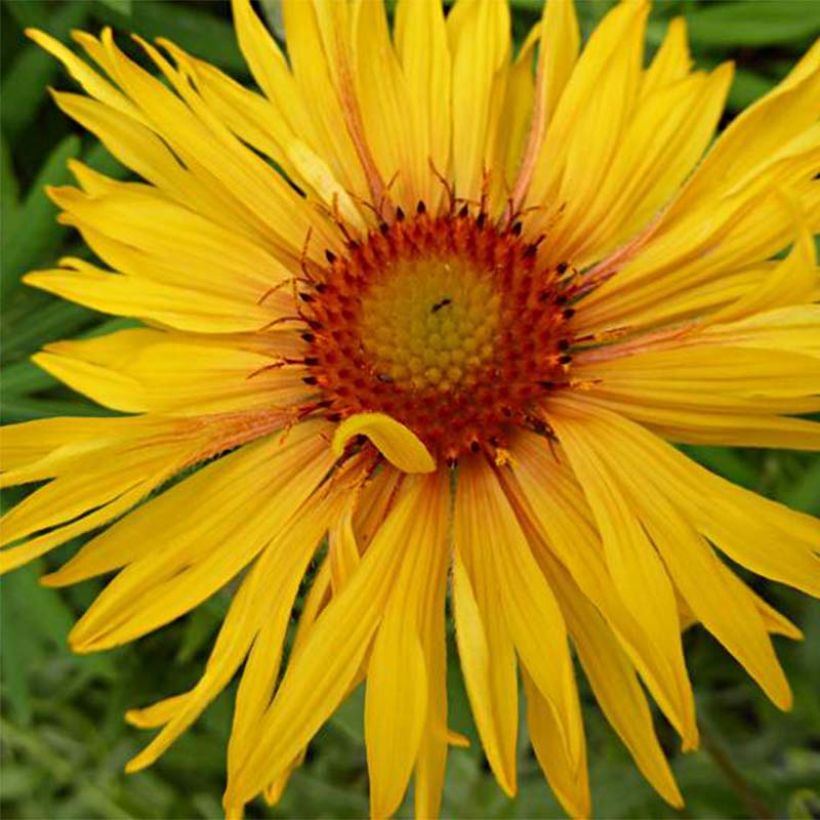

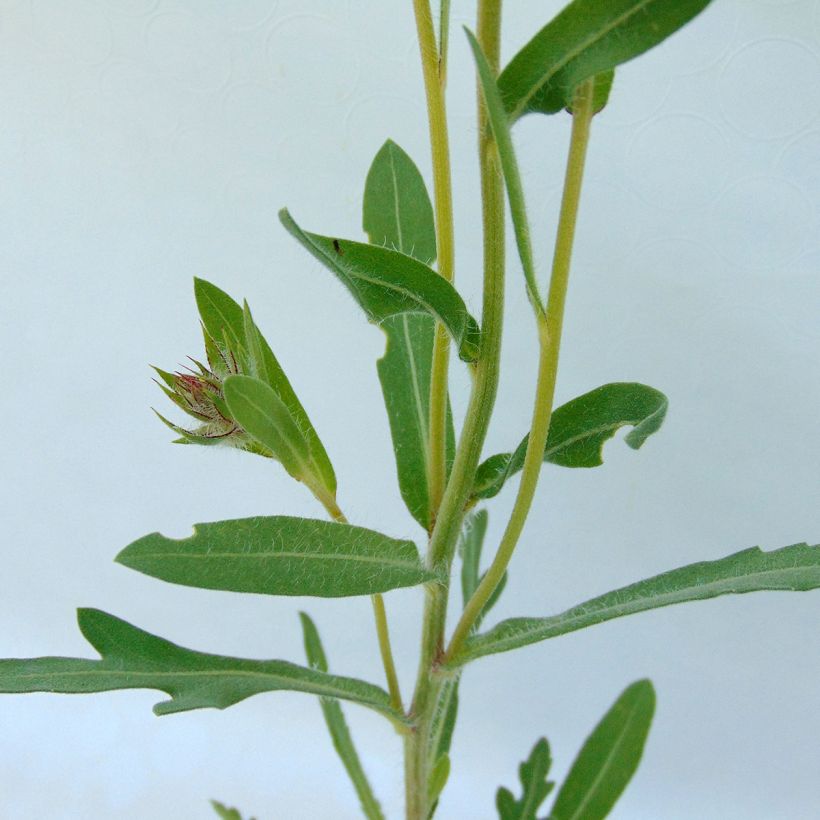

Flowering
Foliage
Plant habit
Botanical data
Gaillardia
aristata
Amber Wheels
Asteraceae
Blanket Flower, Common Gaillardia
Cultivar or hybrid
Other Gaillardia - Blanket Flower
Planting and care
Resistant, gaillardias tolerate intense heat, cold, drought, strong winds, and poor soil. In summer, even a light rain or a small amount of watering during extended dry periods will revive the flowering. Plant them in well-drained soil, in full sun, and stake the taller varieties if needed. In cooler climates, the stems gain in strength what you sacrifice in flowers: cutting back the stems in late September to 10 cm (4in) above the ground helps them survive the winter.
Planting period
Intended location
Care
-
, onOrder confirmed
Reply from on Promesse de fleurs
Summer flowering perennials
Haven't found what you were looking for?
Hardiness is the lowest winter temperature a plant can endure without suffering serious damage or even dying. However, hardiness is affected by location (a sheltered area, such as a patio), protection (winter cover) and soil type (hardiness is improved by well-drained soil).

Photo Sharing Terms & Conditions
In order to encourage gardeners to interact and share their experiences, Promesse de fleurs offers various media enabling content to be uploaded onto its Site - in particular via the ‘Photo sharing’ module.
The User agrees to refrain from:
- Posting any content that is illegal, prejudicial, insulting, racist, inciteful to hatred, revisionist, contrary to public decency, that infringes on privacy or on the privacy rights of third parties, in particular the publicity rights of persons and goods, intellectual property rights, or the right to privacy.
- Submitting content on behalf of a third party;
- Impersonate the identity of a third party and/or publish any personal information about a third party;
In general, the User undertakes to refrain from any unethical behaviour.
All Content (in particular text, comments, files, images, photos, videos, creative works, etc.), which may be subject to property or intellectual property rights, image or other private rights, shall remain the property of the User, subject to the limited rights granted by the terms of the licence granted by Promesse de fleurs as stated below. Users are at liberty to publish or not to publish such Content on the Site, notably via the ‘Photo Sharing’ facility, and accept that this Content shall be made public and freely accessible, notably on the Internet.
Users further acknowledge, undertake to have ,and guarantee that they hold all necessary rights and permissions to publish such material on the Site, in particular with regard to the legislation in force pertaining to any privacy, property, intellectual property, image, or contractual rights, or rights of any other nature. By publishing such Content on the Site, Users acknowledge accepting full liability as publishers of the Content within the meaning of the law, and grant Promesse de fleurs, free of charge, an inclusive, worldwide licence for the said Content for the entire duration of its publication, including all reproduction, representation, up/downloading, displaying, performing, transmission, and storage rights.
Users also grant permission for their name to be linked to the Content and accept that this link may not always be made available.
By engaging in posting material, Users consent to their Content becoming automatically accessible on the Internet, in particular on other sites and/or blogs and/or web pages of the Promesse de fleurs site, including in particular social pages and the Promesse de fleurs catalogue.
Users may secure the removal of entrusted content free of charge by issuing a simple request via our contact form.
The flowering period indicated on our website applies to countries and regions located in USDA zone 8 (France, the United Kingdom, Ireland, the Netherlands, etc.)
It will vary according to where you live:
- In zones 9 to 10 (Italy, Spain, Greece, etc.), flowering will occur about 2 to 4 weeks earlier.
- In zones 6 to 7 (Germany, Poland, Slovenia, and lower mountainous regions), flowering will be delayed by 2 to 3 weeks.
- In zone 5 (Central Europe, Scandinavia), blooming will be delayed by 3 to 5 weeks.
In temperate climates, pruning of spring-flowering shrubs (forsythia, spireas, etc.) should be done just after flowering.
Pruning of summer-flowering shrubs (Indian Lilac, Perovskia, etc.) can be done in winter or spring.
In cold regions as well as with frost-sensitive plants, avoid pruning too early when severe frosts may still occur.
The planting period indicated on our website applies to countries and regions located in USDA zone 8 (France, United Kingdom, Ireland, Netherlands).
It will vary according to where you live:
- In Mediterranean zones (Marseille, Madrid, Milan, etc.), autumn and winter are the best planting periods.
- In continental zones (Strasbourg, Munich, Vienna, etc.), delay planting by 2 to 3 weeks in spring and bring it forward by 2 to 4 weeks in autumn.
- In mountainous regions (the Alps, Pyrenees, Carpathians, etc.), it is best to plant in late spring (May-June) or late summer (August-September).
The harvesting period indicated on our website applies to countries and regions in USDA zone 8 (France, England, Ireland, the Netherlands).
In colder areas (Scandinavia, Poland, Austria...) fruit and vegetable harvests are likely to be delayed by 3-4 weeks.
In warmer areas (Italy, Spain, Greece, etc.), harvesting will probably take place earlier, depending on weather conditions.
The sowing periods indicated on our website apply to countries and regions within USDA Zone 8 (France, UK, Ireland, Netherlands).
In colder areas (Scandinavia, Poland, Austria...), delay any outdoor sowing by 3-4 weeks, or sow under glass.
In warmer climes (Italy, Spain, Greece, etc.), bring outdoor sowing forward by a few weeks.

































